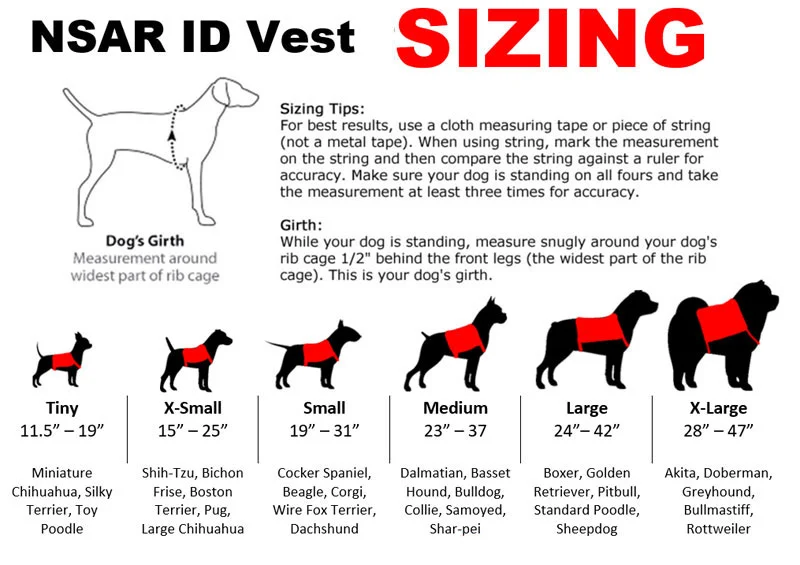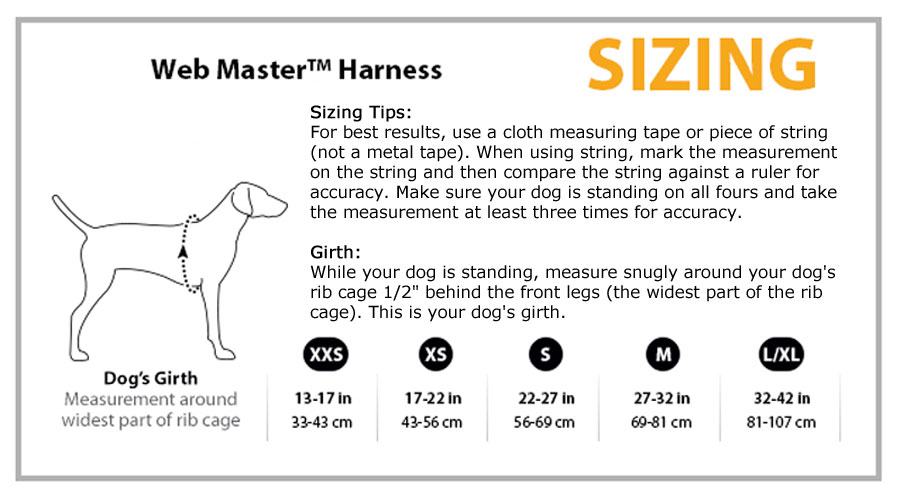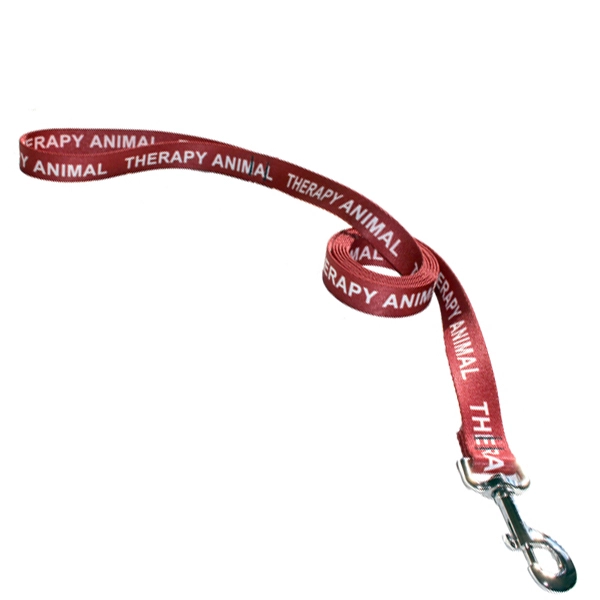
When you have a best friend who is also a furry, four legged service dog with a happy grin and a wagging tail, it is only natural to want to share a plate. It’s fun to share food—it’s a major part of human culture and one of the ways in which we connect with one another. But…dogs are canines, not homo sapiens (hard to remember, I know) and thus, have not only different nutritional requirements, but also different digestive abilities.
To reassure you, before we go any further, it is absolutely Ok to share food with your service dog, just not everything, and certainly not in the same quantities.
While your service dog is an omnivore, meaning they can eat a range of meat and plant based foods, our sweet domestic version of the species is not always quite so strictly in touch with their instincts that they will know to avoid potentially toxic foods. In fact, dogs are notorious for eating just about anything put in front of them, including things like chocolate, which are quite toxic, as well as over eating until they make themselves sick. To be fair, it is a dog’s instinct to overeat, seeing as how in the wild their ancestors (and current relatives, such as the wolf) would gorge themselves on the kill, uncertain when the next meal would arrive.
Since your service dog will not necessarily be a good judge of what is appropriate and safe to eat, it is up to you, as a devoted companion to your furry friend, to take on the responsibility of being informed about the various foods we eat and whether they are safe for sharing with our pups.
This article will focus on vegetables in particular. Are vegetables good for your service dog? Are vegetables harmful to your service dog? When is it appropriate to feed your service dog veggies, and how should you prepare them? And how much? Keep reading, as we delve into these questions.
Doggie Digestive Systems: Carnivore or Omnivore?
Are dogs carnivores (strictly meat eaters) or omnivores (capable of eating meat and vegetables, like humans, and raccoons)? This is actually a bigger debate than you might guess. While dogs seem to be made physiologically to be carnivores, they are classified as omnivores because they can (and do) eat plant materials, including fruits and vegetables. In fact, eating strictly meat will make your service dog sick over the long run, as he will be missing essential nutrients.
Still, dog bodies are optimized for meat, with the pointy teeth of a true carnivore and a digestive system emphasizing strong stomach acid (to kill bacteria of decaying meat), a lack of amylase in the saliva (necessary for the breakdown of starch), an extra large stomach (in order to contain all the meat from those gorging fests) and an overall shorter digestive tract than herbivores or even full on omnivores (like humans) who need a longer tract to breakdown and absorb plant material.
On the other hand, your service dog is an incredibly adaptive animal and are capable of processing a wide range of foods for its nutritional content. Indeed, since hounds joined the human race as one of our specie’s favorite allies some 15,000 years ago, they have certainly proved themselves capable of surviving off a wide range of foods, indicating a more omnivorous habit. Unlike cats, for instance, who really cannot process most vegetables and will not survive without a high meat diet, dogs have proved that they can (and will) eat and digest vegetables. Dogs do not, however, need vegetables to survive. That is, they do not need vegetables in the way we do—but they do need plant material.
The diet of your service dog’s ancestors included eating the stomach contents of their prey: herbivores, who were chock full of plant material—mainly grasses. Canines are also scavengers, meaning they can both eat and receive good nutrients from eating rotting vegetables, carcasses and even (though a little disgustingly) poop.
A good idea, in light of this information, would be to focus the bulk of the diet on animal protein, but incorporate vegetables and other foods as more supplemental bits. The best vegetables will be leafy greens, since they are most similar to the grasses a dog would eat in the wild. However, other vegetables, offered in moderation, can be good too. We’ll discuss more specifics below.
What Nutritional Value Do Vegetables Have (For a Dog)?
Vegetables provide a wide range of minerals and vitamins. They also provide wonderful fiber, which can improve digestion (or, conversely, hamper digestion, causing diarrhea if overdone).
Every vegetable will of course have a different make up of vitamins and minerals. Some of the essential vitamins and minerals required by the canine and which can be found in varying degrees in a given vegetable include: B Vitamins, Calcium, Chlorine, Choline, Copper, Folic acid, Iodine, Iron, Magnesium, Manganese, Niacin, Pantothenic acid, Phosphorus, Potassium, Riboflavin, Selenium, Sodium, Vitamin D, Vitamin K and Zinc.
How to Introduce and Prepare Vegetables for Your Service Dog
So, now that we know your service dog can eat vegetables, how do we actually feed these healthy veggies to our puppy dogs? Can you just put a pile of well-seasoned and prepared veg on a plate for your service dog’s dinner? Or toss him a raw salad?
The answer is no. It’s not quite that simple. Your service dog can eat vegetables, but there are ways to make it easier for him/her to digest and assimilate the nutrients.
Dogs take a while to adjust to any new food. In fact, when introducing a new food, it is not uncommon for a dog to get diarrhea, not necessarily because the food is inherently bad for him, but because his body does not recognize it. It takes time for the body to learn what a food is, and how to break it down and use it to build cells.
This is why it is a good idea to begin small: Try giving your service dog just a bite or two of that zucchini, and increase over time, watching to see his reaction. Give his body time to adjust to this foreign experience, because one thing for certain, if your service dog likes the zucchini, she will not be moderating herself.
Another reason starting slow is a good idea, is that it will allow you to watch your service dog for an actual allergy. Dogs, like humans, sometimes just have a bad reaction to a specific food. While a little diarrhea is normal when introducing a new food, if it sustained and/or in combination with other symptoms such as lethargy or puking, call your veterinarian (and it goes without saying, STOP giving the problem food to the poor pooch!).
Another way to both ease the transition for your service dog into eating vegetables, and to assure the highest rate of digestion and absorption of the veggie, is in a mindful preparation. While dogs can handle some raw vegetables, their digestive systems are not as efficient at processing raw foods as humans (due to the shorter, carnivorous digestive tract).
There are lots of ways you can prepare the food for optimal digestion insuring your service dog gets all the nutrients it can out of the veggies. You can boil, steam, bake, grill or roast the fine veggies for your grateful service dog. Or, you could even leave it raw, but puree it, so the smaller bits will be easier to assimilate into the canine body.
Yet another good reason to cut the veggies into small pieces or cook them ahead of time, is because your service dog’s jaws and teeth are not ideally suited for chewing: their jaw only moves up and down, unlike a human (or herbivore) jaw, which moves side to side while chewing. They also have less molars. This means that dogs tend to swallow quickly—which can potentially lead to choking, especially with hard vegetables.
As for seasoning, salt is unnecessary. In fact, it can even be dangerous, leading to sodium ion poisoning. This is also why it’s a good idea to avoid pickled veggies as well, since they tend to be very high in sodium. Your service dog gets all the salt he/she needs from natural sources and are sensitive to excessive intake of this mineral.
If you really want to exercise your culinary genius for your beloved service dog, it is ok (and even beneficial) to add some more neutral herbs, such as rosemary or parsley. Think culinary herbs here, and as always, be sure to check that they are safe before tossing them into the dish.
And if you find you really enjoy preparing your service dog’s veggie snacks, you can even take it a step further by making your own dog food with a combination of proteins, vegetables and grains!
Vegetables to AVOID!
The list of vegetables to avoid is actually not so extensive. The main thing with veggies is that dogs don’t need that many of them—and they will get sick if fed a particular veggie in too great of portions or too often. If you regulate how much veggies your hound is getting, she should be just fine. The truly toxic veggies are few, and even they would need to be eaten in a large quantity to really cause damage.
Onion
This root vegetable of the alium family is dangerous to dogs in large quantities because of a constituent found in it called thiosulphate. Terrifyingly, because dogs lack the enzyme necessary to digest this chemical, it becomes toxic in their bodies and can cause the rupture of red blood cells, known as hemolytic anemia.
Don’t panic if your service dog gets a hold of a slice of pizza with onions on it. While you definitely do not want to intentionally be feeding him onions, a few here and there will not cause great damage. However, a cumulative effect—that is, eating a little bit of onion on a regular basis over a long time—can have quite serious consequences.
Some breeds are more sensitive than others, but it’s a good idea to avoid onions altogether just to be safe. And that includes powdered onions! Many seasoning include powdered onion, so keep this in mind when feeding Fido table scraps.
Other members of the Alium family such as chives, leeks and garlic also contain this ingredient, so best to avoid them in big quantities as well.
Rhubarb
Rhubarb contains oxalates, which are salts which can bind with the bodies calcium, causing a calcium deficiency. The stem is actually Ok to eat, as it contains such a small amount of oxalates. The leaves, however, contain toxic levels of oxalates if enough is consumed. Symptoms can include drooling, diarrhea, tremors and lethargy.
Avocado
Technically a fruit, Avocados contain persin, which is actually considered only mildly toxic to dogs, if at all. It has gotten a bad rap due to the poisoning effects it has on other animals, such as birds and cattle (so if you have a canary or a cow, do not feed it avocado…but your service dog will probably be fine, if you follow the outline above and introduce it slowly, observing the response).
Vegetables for You and Your Service dog to EMBRACE!
Luckily, as evidenced by the very few harmful veggies for dogs, most vegetables are fair game for you hound, when given in moderation and prepared in the correct way. And that is great news, because vegetables are often a healthier alternative to commercial treats which contain additives and chemicals.
Here’s a list of some of the popular vegetables to feed dogs (though far from exhaustive), and why they are good, along with any stipulations in the preparation.
Broccoli
Broccoli is great, but only in small quantities—it contains isothiocyanates, which can cause stomach upset, so feed in moderation.
Carrots
Especially noted for their high beta carotene and Vitamin A content (essential for healthy bones and immune system, among other things), carrots are also excellent for cleaning tartar off dog teeth!
Celery
Celery is high in fiber, Vitamins A, B and C as well as plethora of minerals. It is great for your dogs heart and also contains Apigenin, which is a cancer fighting compound. While high in salt (meaning, like the rest of the veggies, only serve in moderation!), celery is known to freshens a dog’s breath.
Corn
Corn, in the form of corn starch, is actually one of the primary ingredients in mainstream dog food. Corn is a source of proteins, carbohydrates, antioxidants and linoleic acis. Corn is great, just be sure not to give it to your service dog on the cob! This is unfortunate, since it seems like corn on the cob would make such a great chew toy! However, the inedible cob can actually rip up your service dog’s digestive system, causing major damage. On the flipside, popcorn is ok! (so long as it’s plain without butter and salt).
Cucumber
Cucumbers are so full of water and minerals that they are quite hydrating, among other things. While the skin is the most healthy part, it is unfortunately also the most challenging to digest. Peel it before feeding your service dog to avoid stomach upset.
Greenbeans
A great, snappy treat, greenbeans contain vitamin C, K and manganese.
Potatoes
High in iron, potatoes are great for dogs, so long as they are cooked (either boiled or baked, without seasoning).
Sweet Potatoes
Full of beta carotene, potassium, vitamin B6 and C, sweet potatoes are also great for your service dog’s fur coat and skin.
There are literally dozens of other vegetables out there: root veggies such as beets, squashes, pumpkins, cauliflower, zucchini and various greens, such as kale. The main thing to keep in mind when considering a new vegetable for your service dog, is to introduce it slowly. And it is always a good idea to look up each new vegetable, just to be sure it’s safe and to check on the specifics.
Conclusion:
There are lots of good reasons to incorporate vegetables into your service dog’s diet. Feeding your service dog vegetables can be a great low carb alternative to doggie treats, offering her baby carrots or slices of cucumber. It can also be fun to share your food with your pup. If you’re cooking dinner, for instance, and chopping veggies—perhaps you want to share the experience with Rex by tossing him a bit of zucchini. Veggies can also offer dogs important vitamins and minerals. Just remember that your service dog’s diet should really be based around protein. Celebrate vegetables and experiment with the safe food options for your pet, just remember to keep your hound’s diet balanced.


























